Why I pretended my dyslexia wasn’t a big deal - my experiences as a dyslexic teacher.
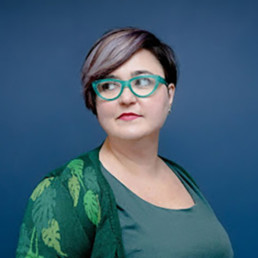
Written by Catrina Lowri
Catrina Lowri is the founder of Neuroteachers and a neurodivergent teacher, trainer, and coach. As well as having 22 years’ experience of working in education, she also speaks as a dyslexic and bipolar woman, who had her own unique journey through the education system.
When I had already been teaching for about 10 years, I met a pair of grandparents at a friend’s barbecue. They had just received some devastating news; their 9-year-old grandson had been diagnosed with dyslexia.
They told me this in hushed voices, as if they were ashamed.
Although, their reaction was not unusual (97% of respondents in one survey viewed dyslexia negatively *), I was taken aback. Did this mean I should be ashamed or devastated about my own neurodivergence?
I did my best to reassure the couple that their grandson would be fine. I told them lots of successful people, like Richard Branson and Tom Cruise are dyslexic. Although he might need extra support, their grandson could get GCSEs and A levels if he wanted. They seemed reassured. Then I told them I was a dyslexic teacher.
Their reaction astounded me even more than the shamed hush had done previously. They were over the moon at my success! The grandfather toasted my talents, and the grandmother gave me a hug. They both treated me like I had just climbed Mount Everest. I couldn’t fathom why.
Until that point, I had never considered my achievements anything special. Yes, I’m a dyslexic teacher who went on to gain a master’s degree but was that out of the ordinary? I knew no other dyslexic teachers, but they must exist. I’ve always disliked it when people say I’ve ‘overcome’ my dyslexia. I haven’t. I’m still as dyslexic as I was the day I was born ( it’s genetic). I’ve just found ways around it. Most of which involve the use of technology.
I used to downplay my attainment in a matter-of-fact fashion. I disliked people who made ‘ a big deal’ of their dyslexia. My dyslexic friend, and I used to joke that we would write a book called ‘So you’re dyslexic? Just live with it!” As if all you had to do was keep calm and carry on.
I have talked before about my experiences at teacher training, where another student commented that he believed dyslexia was a middle class camouflage of a lack of intelligence. That must have stuck because, up until my chance meeting with these grandparents, I had just shrugged off my neurodiversity (ND) and downplayed my success.
After meeting my fellow barbeque guests, however, I changed my attitude. No, it hasn’t been easy to forge my career, firstly as a schoolteacher and now as a private specialist teacher and trainer. Yes, I do find several aspects of the job harder because of my ND. And yes, I am proud of my achievements.
I’m now 23rd years into my career, I’ve met hundreds of colleagues, yet I know very few ND teachers and even fewer dyslexic ones. My next step is to try and find us all support and recognition so that we can be good role models to ND children. And perhaps inspire the next generation of ND educators.
Reference Dr Kate Griggs ‘ The Creative Brilliance of Dyslexia’ https://www.ted.com/talks/kate_griggs_the_creative_brilliance_of_dyslexia
Building trust: working with Gypsy, Roma & Traveller students

Written by Christian Johnson
Christian works as a tutor with GRT (Gypsy, Roma and Traveller) students for Open Doors Education and Training, and is also a Policy and Campaigns Officer for The Traveller Movement.
I’m a tutor working for Open Doors Education and Training (ODET), a community interest company and educational provider offering funded and tailored education to Gypsy, Roma and Traveller children and young people. Having worked for ODET for over two years, one of the things we often hear from schools and other referral bodies, be that local authorities or youth service providers, is that they don’t know how to engage with different communities from Gypsy, Roma and Traveller backgrounds.
This is something which is unfortunately reflected in the data. When it comes to education, GRT (Gypsy, Roma, Traveller) communities have the lowest attainment rates of any ethnic group in the UK as well as some of the highest fixed term exclusion rates (21.26% for Gypsy/Roma in 2018-19 and 14.63% for Irish Travellers vs. 5.36% of all pupils) from UK schools. These figures are compounded by the well-known correlation between low educational attainment and exposure to the criminal justice system, often referred to as the ‘School to Prison Pipeline’, which extends to the GRT population. Almost 10% of children in the youth estate identified as GRT, which is extremely concerning when we consider GRT only constitute between 0.5 – 1% of the UK population.
In trying to address these widening disparities, we recently released an evaluation of one of educational programs, ‘Tutors for Young GRT’, in partnership with Leeds Beckett University titled ‘Building Trust, Stepping Together’. Through stories, poems and songs, researchers captured the voices and thoughts of a large cohort of GRT students studying with Open Doors Education across the country, distilling their findings into cogent and concise reflections on what works and what doesn’t. These conclusions represent fertile ground for other teachers and those working within education to develop their own approaches to engaging with young GRT.
Tutors for Young Gypsy, Roma and Travellers
In the wake of the pandemic and in response to the data available, ODET’s ‘Tutors for Young GRT’ program was created to provide the support needed to reduce the attainment gap between young Gypsy, Roma and Traveller students and their peers. Each student receives an hour a week of one-to-one lessons from their tutor over the course of a school year, focused on topics best suited to their needs and delivered remotely via Zoom. In designing the program, ODET was keen to ensure that digital access didn’t become a barrier to education – as it was for many students during the pandemic. With this in mind, the digital needs for each student are assessed upon joining the program and, if required, are provided with a suitable device to attend their lessons free of charge.
The tutoring itself is, paradoxically, both generalised but also tailored; encompassing all ages (provided they’re in full time education) and across all subjects. This broader scope gives us as tutors a greater flexibility to tailor our lessons to the needs and interests of the child. While we place an onus on core subjects, if a child is a particularly talented artist then we’ll try to help them cultivate their ability by assigning them a relevantly experienced tutor. The same goes for other subjects; it’s primarily about nurturing a passion for learning among the students and giving them the support they need to succeed, regardless of the subject.
Building Trust, Stepping Together
Compiling the voices and experiences of 135 students, alongside reports published by the tutors at the end of each lesson, the evaluation found the program to be successful in helping to address the educational inequalities faced by the Gypsy, Roma and Traveller young children and young people. These findings were broken down into several sections, each tackling a component of what helped the program’s delivery, and summarising the voices of the students.
Valuing learning despite school – There was an overwhelming sense from the students that learning was important. Many students recognised the importance of the core subjects but also expressed interests in the humanities, arts and music. The report found that despite a desire to learn, many Gypsy, Roma and Traveller young people leave school due to poor experiences in education, often stemming from issues such as bullying, instances of discrimination and racism, bureaucracy and digital exclusion. One student commented that ‘I prefer this (online tutoring through ODET) to learning in class because sometimes it can get a little tricky in class with other people, who can sometimes make it hard to concentrate’. This willingness to learn was reflected in the attendance figures from the program, which, on average hovered at a consistent 70%.
Quality Tutors – The report found that the one-to-one structure of the program was positively received. Consistent across the experiences shared by students, were mentions of the importance of tutors having confidence in their pupils’ ability and building productive and supportive relationships. Another point of emphasis was that students didn’t feel judged or pressured during their learning. One student mentioned that they liked that the tutors are not too “pushy”. I think it helps me learn faster because they never put pressure on us so we are able to focus more.
ODET’s tuition – Research has shown us that GRT communities are more likely to have poor experiences within the education system. Another key takeaway of the report was that the program helped students build confidence with learning, which then carried into mainstream learning. One student reported that ‘school has been so much easier since tutoring with [tutor’s name]. School feels like so much better and all the support I’ve been getting… I really hope our lessons can continue’. This was reflected in data aggregated from the tutors’ reports, which found that roughly 90% of students displayed a commitment level ‘at or above the expected level’.
My experiences working with Gypsy, Roma and Traveller Young People
The term ‘GRT’ itself is a broad umbrella, encompassing three varied groups (Gypsy, Roma and Traveller); each with their own distinct identities, variations and regional specificities. While there might be one broad term, the experiences of each student I’ve taught on the program have been resoundingly diverse. I’ve taught students who’ve left mainstream education in year 8 to be home-educated with their siblings, others who raise horses in their spare time; one young man who competes nationally for his age group in golf, and another who was awarded ‘student of the year’ in their school – the list goes on. In my experience, young people from Gypsy, Roma and Traveller backgrounds are, more often than not, high attainers, just not always in the context of mainstream education.
In a way, it’s a refreshing process to go through as an educator, for each lesson prompts you to reconsider and adjust your approach in order to better meet the needs of the child. Whether that’s through brushing up on your knowledge of golf terminology to teach spelling, or helping a student learn maths by designing a treehouse with them. This is where the format of the program, being one-to-one, really shines. It allows us as tutors, to tailor the lessons to the individual needs and experiences of the student, going at their pace while using material they’re passionate about. I realise it is a genuine rarity within the education sector, to have the scope and the time available to deliver lessons in this way, but it’s greatly needed for young GRT. In order to help address the widening attainment gap and allow these young people to go into the world confident and qualified to pursue a future they want rather than feeling like they’re on the back foot, programs such as these are absolutely essential.
One thing which is consistent across the students who’ve been on the program for a few weeks or more, is an amazing tenacity and genuine passion for learning. These students want to learn. Many just don’t necessarily see learning as synonymous with formal education. Several students have expressed this to me, that academic learning isn’t for them, that it’s for someone else.
This morning I received an email from a teacher in south London looking for poetry recommendations by Gypsy, Roma and Traveller authors she could teach to her year 7 class. I’m certainly no authority on GRT poetry, but it’s great to see educators recognising the importance of including positive Gypsy, Roma and Traveller representation in their curriculum. Including material from Gypsy, Roma and Travellers isn’t something teachers should ignore, but which they can find out about and incorporate. Because having texts, or paintings, or songs for that matter, from GRT artists, shows Gypsy, Roma and Traveller young people that education is for them, that it’s a path or stepping stone they can take to help them build the life they want.
Two of the key words which kept coming up in feedback for Leeds Beckett’s evaluation were patience and support. Many of the students reported feeling intimidated by school, that it was scary, lonely, and competitive. With many students, I noticed a dramatic shift in their attitude to learning after just a few weeks and I think this has a lot to do with just feeling comfortable. Having a historically difficult relationship with the UK’s education system, it’s important that teachers are patient, understanding and sympathetic of the structural barriers faced by many of Gypsy, Roma and Traveller young people and their families before them.
In talking about the report and my experiences as a tutor on the program, I hope to show others working with these young people that they want to learn, want to engage, and will do great things if given the opportunity.
For further information and guidance on techniques to engage with the GRT communities, I’d certainly recommend our recently released toolkit of best practice, titled BESTIE. Released in partnership with the National Youth Association, the toolkit provides a wealth of helpful guidance for practitioners working with young GRT in different contexts. You can find the toolkit here.
When Does Identity Matter?
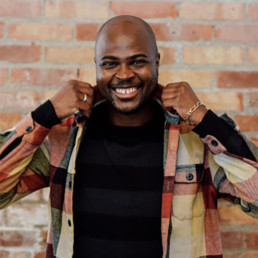
Written by Mahlon Evans-Sinclair
Mahlon Evans-Sinclair is an experienced educator with extensive participation in the fields of learning, professional & personal development, and EDI (Equity, Diversity and Inclusion).
A good rule of thumb is being able to articulate its relevance to yourself.
I often read many stories/recollections that involve identity markers as a descriptor.
I’ve reasoned with the many manifestations of how people use them and figure that whatever the expression, the main reason is to draw attention to something that seemingly has relevance to the story… but does it always…
A former colleague would often tell stories and when an identity descriptor would come up, they would often pause and say ‘and (e.g. race) is relevant to the story here because’… At first it would take me out of the story as I would wonder what the point of drawing attention to it was for, but the more I heard it being said, the more I felt comfortable and more understanding of its intention – It was a signifier for both the storyteller and the audience that the inclusion of this marker was intentional and why.
In thinking about how we use markers in education, sometimes we implicitly state things and expect that others instinctively know what we mean, or we (un)intentionally ‘add weight’ to the meaning of our stories by throwing in unexplained identity markers as though they are adjectives.
Consider for example that one of the students in a class has a learning difference that needs to be taken into account. It makes sense to say, ‘and this status matters here because (it will help with your planning/seating arrangements/conversations with them and their family)’. Consider that the same student happens to be the only non-white student in the class. Would stating that there’s a ‘Black kid with dyslexia’ in the class be helpful in the same way?
It’d be useful to think about what you’re actually intending to state.
– Is the race as important as the learning difference?
– Do the race and the learning difference compound?
– Are there no other ways of describing the student?
You could say that this would be simply solved by knowing and using the student’s name – yes(!) – however, we don’t always do this, especially when retelling a story to an audience who may not have the same level of connection to the subject matter.
So, consider when telling a story that involves an identity marker (such as race, gender, age, sexual orientation, physical or mental difference, etc), add in a clarifier of ‘their identity matters here because…’ and see if it actually does.
More isn’t enough
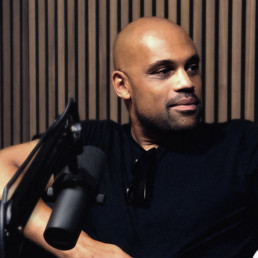
Written by Charles Golding
Charles Golding is a creative director and filmmaker, a disruptor with a passion for change.
CARGO, Charting African Resilience Generating Opportunities, was launched in 2018 to address the lack of inspiring African and African diaspora narratives in education. Since then, awareness has been raised of the bias in representation in the current curriculum.
In the wake of the resurgence of the Black Lives Matter movement in 2020, many groups and organisations have sprung up to address the inequality and lack of diversity in business and education. We cannot be sure whether these organisations were echoing the zeitgeist or capitalising on the moment. Either way, we are now in an unprecedented time where diverse resources and educational tools are available on a scale unimaginable a few years ago. From major publishers, academics and celebrities, it seems many people have thrown their hat into the ring to help address the perceived lack of Black history within our classrooms.
When CARGO began its journey into the world of education, we made a number of conscious decisions that would help define our focus and ambition. As Lawrence Hoo, CARGO co-founder recounts in the BBC documentary The Classroom Revolution: “At school, we weren’t taught white history.” This is an important distinction with the language we use to describe our work.
We choose not to categorise the material we created with the binary simplicity of racial politics. We put language at the heart of our material. For example, we use ‘of African and African Diaspora heritage’ rather than ‘Black’; ‘of European heritage’ rather than ‘white’; ‘enslaved people’ rather than ‘slaves’. Our choice of words help to humanise often dehumanised narratives and define our direction.
Another important distinction is our focus on engagement. We do not want our material to feel like a traditional classroom resources. We approach the creation of CARGO Classroom resources with a desire to create material that will engage, educate and entertain.
Beyond our drive to address the inequality within the secondary school system was a realisation there was a need to energise and enrich the dusty and often antiquated environment of teaching in schools. We understood there was a void beyond racial inequality that spanned generations. The traditional institutions that have governed the distribution of educational material are no longer fit for purpose and have become out of touch with the needs of today’s students. Pupils are demanding change, and all too often, are taking control of their own learning. Due to this demand, we are now developing KS1 and KS2 primary school resources as an addition to the CARGO Classroom KS3 secondary school resources currently available.
No longer can the current frameworks and structures that have governed learning be adequate to fulfil the ideals and aspirations of the coming generations. We want to create materials that would be appropriate for children raised in the age of mass media and gaming. In an environment where information is more accessible than ever before, we know it is important to elevate our material to compete with the ever-changing landscape of digital media.
The CARGO Classroom resources utilise rich, illuminating content from contemporary illustrations, engaging narrative poetry and cinematic videos. We acutely realise the importance of broader representation within teaching and the cross-cultural gains that can be made through a deeper knowledge and understanding. However, the information is only part of the puzzle with the method of delivery and context of the learning being equally as important if we are to inspire engagement and retain learning.
As part of the BBC’s ‘Classroom Revolution ’ documentary, Lawrence visited two children who had been excluded from mainstream education. These students were categorised as hard to reach and subsequently hard to motivate and engage. Their teacher, Rebekah Leese, decided to structure an activity around one of the CARGO Classroom lessons. What you don’t see in the film is as the lesson continues, tutors from other classes gathered in the corridor in amazement as they attempted to look through the windows of the classroom. They couldn’t believe the children stayed engaged for as long as they did. Rebekah remarked: “We are lucky to maintain their concentration for 20 minutes; they were engaged for over an hour.” We now understand one of those students is pursuing history as a subject for further study. Obviously not every classroom will benefit from such a monumental learning experience as a result of CARGO Classroom resources. However, the context and delivery of resources should remain at the forefront of our desire to rejuvenate the landscape of modern learning. It isn’t enough to just supply the material and tell different stories, it’s about how you tell those stories and how we can maximise engagement. We are not interested in ticking boxes; we are here to pull down barriers and broaden ambition.
For more information about CARGO Classroom, please visit www.cargomovement.org/classroom
Being the teacher that I never had...
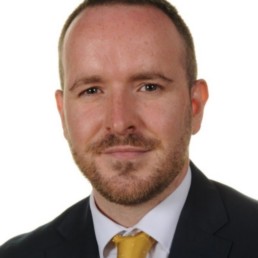
Written by Craig Weir
LGBTQ+ Educator, Consultant and Safeguarding Lead
People often ask why I became a teacher. The answer – to be the teacher that I never had.
My own secondary school experience was tough. I lived in a small town off the west coast of Scotland where social status was defined mostly by what football team you supported: Rangers or Celtic. My lack of interest in either team made me an outcast to the boys in P.E, leading to me being picked last for all sports and seen as less alpha. It was obvious that the boys quickly assumed that I was strange because I didn’t see football as the most important thing at that point. It wasn’t that I wasn’t interested or good at sports; the assumption was that I was different because I couldn’t participate in the locker room “banter”.
This was the start of the multiple years of being bullied for being a “fag”, “gay boy”, “poof” or “bender”. These words were hammered into me daily from what felt like many and most of the boys. Instead of reporting this, I decided to hide my upset for the fear of looking weak and upsetting my family. It was, in fact, my cousin who spoke up when they witnessed the unkindness of their own friends towards me. When my mother finally asked the school to step in and help, they really could not and did not do much. The school were confined by the section 28 legislation that banned the promotion of homosexuality; I still struggle with this now. Unfortunately, the school did not act with speed or strength, which led me to absorb similar abuse throughout most of my school years. In all honesty, I think I’d struggle to write how I really felt at this time. In fact, this is a time that I have lost as it feels better to have “forgotten” what really happened. What I do know is it does – and did – get better.
On leaving school, I trained in musical theatre at a very famous drama school in central London. The fact that I was moving hundreds of miles away from the pain was comforting. I was a real-life Billy Elliot and finally recognised myself and sexuality in others around me. This eventually led to me working in theatre, television and film with some of the biggest names in the industry. I never thought I was going back to secondary school… ever.
Like others, I found the pressures of work got to me and my love for an industry was being destroyed by the conditions I worked under. I was constantly showing poor health and was “blue lit” to hospital after a suspected brain aneurysm which was in fact stress. I hated my job, the hours, and the fact it was destroying one of my biggest loves – the theatre. I also felt too proud to admit that this wasn’t for me. I was worried that I had failed. Again, I was worried that I would upset others and seem weak.
With the support from my partner and my family. I quit my toxic career and retrained as an English teacher. Why? This went back to the hope that I could support someone in a way that was never available to me.
I now work at a comprehensive school in South London. The school has a large focus on sports and it could be said it’s pretty alpha in many ways: competition is very important.
As an English teacher, I went back into the closet and kept my private life private. Some of my colleagues were aware and encouraged me to be open publicly within the school. For some reason, I just could not do it and I didn’t know why.
I now want you to imagine a Wednesday afternoon. I was teaching Romeo and Juliet and Mercutio has just started the “Young Hearts Run Free” scene in Baz Luhrmann’s movie version. My class was overrunning; another class were waiting at the door ready to come in. It was a busy corridor. As I released my class, the popular girl in year 8 was at the door – strange because I did not teach her. This is the girl that can command the attention of her peers in a breath. I’m sure you know the type. Anyway, she knocks on the door asked loudly:
“Sir, are you gay?”
In all honesty, I was shocked by my reaction and shocked by her direct question. She repeated:
“I said sir, are you gay…?
My reply… “no”.
Why did I reply with this?
I then had to teach my next class with a racing heart, struggling to catch my breath, sweat pouring down my face and barely able to think clearly. I was not prepared for the question about my sexuality. I was not prepared to be transported back into the boy who stood in school feeling terrified of the question that I didn’t know the answer to.
After this experience, I thought for a long time about why I had replied “no”. I was mortified and hurt at my response. Why did I go back “into the closet” after 15 happy years out of it?
My colleagues have been brilliant; my leadership have been even better. They understood the pain and allowed me to speak. They allowed me a safe space to decide what I wanted to do.
This year, I decided to tackle this trauma myself. I was going to try to be more forthright. This started with a quick chat about equality with my year 8 class. When they asked me about my wife, I quickly corrected them and said I had a male partner. None of the students had much of a reaction but, for me, the feelings of worry and trauma came flooding back. However, I knew that this time it was on my terms.
I had started to feel empowered and more authentic. I knew that by being in control, my history and identity could be used as a positive rather than negative. So, I and another colleague decided to run the LGBTQ+ club in school. Doing this with another member of staff made me feel safe and supported. The school honoured the decision to have two members of staff on this club as they knew the support we gave one another was important. I could not have done this without her.
LGBT+ History month came round and, as Heads of Year, we both knew that we’d like to deliver an assembly to our year groups on allyship and the history that came before us. Eventually, this turned into a whole school assembly that was delivered to every year group across the week. Honestly, I was terrified. I was ‘outing’ myself to every student and staff member in the school. Starting with the Equality Act, I informed the students that I was delivering this assembly as a gay man. I could feel myself becoming emotional and I’m sure this was obvious to the students too. I was numb and couldn’t speak anymore but the band-aid was ripped off. My colleague was my hero in this moment: in all 5 assemblies she stepped in and swiftly carried on until I could compose myself to continue.
Every assembly got tougher, despite me thinking they’d get easier. I started to see myself as vulnerable again. As the year groups got older, their reactions became louder – particularly the boys, who presented with a mixture of shock, laughter and smiles. This made me feel exposed but my hope was that my pain would be far less than the gain for the students who needed to hear this.
The assembly was received well. Children I’d never met before were saying hello to me. It was positive.
Was there a negative? Yes. I remember a teenage boy stirred up a small anti-ally party in one of his lessons immediately after the assembly. The teacher, of course, had my back and had him removed immediately. Nevertheless, I remember this more than I remember the positives. Recently, I’ve had an experience of another boy miming certain physical acts that he thinks are related to me. Sadly, both obvious negatives here came from boys, boys that are respected and known by their peers. Whilst this could be another trauma trigger… by releasing my pain and worry, I have realised, I’ve gained strength.
Honestly, I have no idea if my experience or honesty has helped anyone at school. What I do know is that I have helped me. Would I have done things differently? Absolutely. However, when we struggle with pain or trauma, I truly believe we can only do our best in that moment. I have amazing friends and colleagues who have supported me in being honest, transparent, and visible. Hopefully, this visibility will help someone else one day.
Why Don’t We Talk About Intersectionality in Schools?
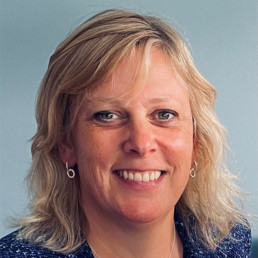
Written by Dr Jo Trevenna
Dr Jo Trevenna has over 20 years' experience of educational leadership from early years to post-graduate level. Her ongoing academic interests centre on Leadership and EEDI. Her company, Potential Education, offers leadership reviews, support and training and EEDI-focused school support.
There can’t be many of us still thinking that human identity is singular. Right? Aren’t we a combination of diverse characteristics that create and impact on our existence? Expectations and assumptions around combinations of characteristics are increasingly illuminated in societies, with light thrown on those who experience multiple discrimination and shade thrown on those who discriminate against those with different combinations of characteristics. The complexity around identity is foregrounded in explorations of intersectional discrimination. Yet intersectional disadvantage is not generally a focus for English schools.
Why?
Is it a lack of understanding and awareness or the lack of external accountability?
The Law
Critical awareness of the vulnerabilities faced by those with exact combinations of identity characteristics was first associated with the legal work of Kimberlé Crenshaw which looked into the discrimination experienced by African-American women in terms of ‘intersecting patterns of racism and sexism’ (Crenshaw 1991, p1243). Crenshaw asserted that anti-discrimination legislation in the United States did not actually protect African-American women because, when making legal claims against an employer, this particular group had to choose between a focus on either their race or gender, even though the discrimination they faced came at the ‘intersection’ of these two identity characteristics.
Section 14 of The Equality Act (2010) recognises the potential for discrimination pertaining to ‘combined discrimination: dual characteristics’ (Legislation.gov.uk 2010). The focus here is limited to direct discrimination against the combination of only two characteristics. More significantly, Section 14 has never, in fact, come into force. It just sits there in provisional status.
As it stands, therefore, the law does not adequately protect against intersectional discrimination and, in terms of English schools, there is no legal imperative to tackle intersectional discrimination.
Publicly Available Data
Published performance table data is hugely significant for schools. The first stage of the high profile ‘school and college performance measures’ website offers only a single-axis approach to pupil data. Some basic intersectional data is available on the ‘Explore Education Statistics’ section of the platform relating to ethnicity and disadvantage, disadvantage and gender, SEN and ethnicity. However, the data remains on cohort numbers and does not provide any information which may indicate the impact of those intersections on pupil academic performance, exclusions/suspensions and attendance. FOI requests can be made and the GOV.UK website also offers the facility for researchers through its new Grading and Admissions Data for England (GRADE) service. This service may be a significant step forward in terms of higher level transparency but it does not provide readily accessible data to the public on intersectional discrimination affecting pupils.
Data revealing the intersectional factors affecting pupils is available to school leaders and governors, local authorities and Ofsted via the ‘Analyse School Performance’ (ASP) secure access platform. Filtering mechanisms enable reports combining specific pupil characteristics, eg: boys with SEN, and scatterplot graphs make it relatively easy to identify patterns of underperformance because of key combinations of protected characteristics thereby highlighting potential impact of discrimination and flagging up need to address. Another school performance document is the Inspection Data Summary Report (IDSR), which is accessed on the secure ASP portal. The IDSR is a key document for Ofsted Inspectors when preparing to inspect a school and informs initial discussions with headteachers. Like the ASP tool, the IDSR does provide schools and Ofsted with a retrospective mini intersectional tool in its coding on scatterplots of the progress and attainment of pupils by binary gender classification and SEN status and deprivation status. However, there is no public access to this data.
To sum up: disadvantages experienced by pupils with specific combinations of identity characteristics in English schools are not readily flagged in publicly published school data. Perhaps Ofsted, which does have access to this anonymised intersectional data via the ASP and IDSR, has the potential to be the driving force in helping schools engage with intersectional discrimination.
Taking a sample of 68 Ofsted Section 5 inspection reports published in a six month period (not including those which inspected an already ‘Good’ school), there are only references to single-axis identity characteristics. In this sample, Ofsted, as the key inspection mechanism for schools, does not engage with the impact of intersectional discrimination on pupils. The lack of referencing in this sample of reports is not surprising given that Ofsted’s School Inspection Handbook only relates identity characteristics on a single-axis framework.
As it stands, then, there is no legal accountability, no easily accessible public data to enable transparent exploration of the impact on pupils and little Ofsted engagement with intersectional discrimination and disadvantage. Right now, without the external accountability structures, it is the choice of school leaders whether or not to adopt an intersectional approach to their schools. Given that most of us agree that identity has multiple components, it is surely time to explore how an intersectional approach can throw light on intersectional disadvantage and discrimination and therefore help schools to tackle it head on despite the lack of an external accountability framework.
On Disability #IDPwD2022
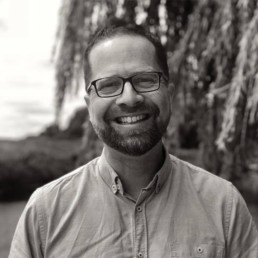
Written by Matthew Savage
Former international school Principal, proud father of two transgender adult children, Associate Consultant with LSC Education, and founder of #themonalisaeffect.
“My own heart let me more have pity on; let
Me live to my sad self hereafter kind,
Charitable…”
(Gerard Manley Hopkins)
In many ways, I have enjoyed my return to face-to-face consultancy, and to the buzz, warmth and joy of human interaction. However, I have also realised something else: on Zoom, I was not disabled. On Zoom, I could still walk and run, swim and cycle. On Zoom, I did not need my wheelchair, crutches or mobility scooter to move around. On Zoom, nobody would have known I was any different.
In recent months, I have been to restaurants with friends and colleagues, and I have developed an interesting habit. As soon as I am seated, I ask that my scooter and crutches are taken away out of my view and the view of others. I do the same when I am speaking to an audience too. Somehow, I seem to think that, if my disability is hidden from view, it will no longer exist.
When I first became ill, the talk was all of diagnosis and recovery. Medics were optimistic, and friends and family still asked that I “stay positive”. However, with time, the medics started to lose hope, and friends and family, not knowing what to say, chose, instead, to say nothing. It feels increasingly like my present has become my future, the two intertwined.
Although often relentless and ablaze, my pain is silent: mixing medication and mind muscle, I try to ensure that nobody knows. Similarly, I have managed to mask my encroaching stammer so far, although I know I will start to lose that battle soon. But people see my inability to walk before they see me; and, therefore, try as I might, it cannot be hidden.
This has presented me with a problem. As my disability becomes my body, I cannot be ashamed of one without being ashamed of the other too. Like many who have survived childhood trauma, I have a lot of shame, but I have realised that I cannot be ashamed of my disability. And that, as long as it is a guest in my house, I must welcome and embrace it as myself and, in so doing, love it too.
#DisabilityAwareness #DisabilityPride
Desire to study diverse drama and playwrights in schools not matched by current educational landscape
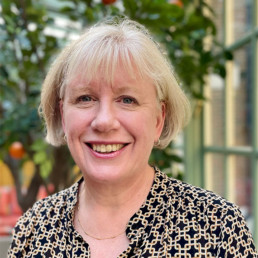
Written by Margaret Bartley
Editorial Director for Literary Drama at Bloomsbury. Since 2002 she has been the Publisher of the Arden Shakespeare and now has editorial responsibility for Bloomsbury's digital platform Drama Online, the Methuen Drama imprint, and the Arden Shakespeare. She is Bloomsbury’s representative on the Lit in Colour Advisory Board and sponsor of Bloomsbury Academic’s Diversity, Equity and Inclusion working group.
90% of drama texts taught at GCSE and 96% at A Level English Literature are written by white playwrights
New research released today by Bloomsbury Publishing, through its Methuen Drama imprint and as part of its Lit in Colour programme, illustrates the popularity and contradiction of teaching drama texts for English Literature at GCSE and A Level in today’s secondary schools in England and Wales.
Drama (excluding Shakespeare) is not compulsory in the GCSE English Literature specification, yet 93% of teachers who responded to Bloomsbury’s survey choose to teach a drama text to a GCSE class. Under 2022 curriculum specifications, drama texts by white playwrights account for 90% of drama texts taught at GCSE and 96% at A Level English Literature. This contrasts with 93% of teachers who said they would like to see a more ethnically diverse range of writers offered by exam boards. This desire from teachers is met with student demand. Of the teachers surveyed, 65% said there was a demand from their students to study more ethnically diverse writers.
Launched in 2020 by Penguin Books UK, alongside race equality think tank The Runnymede Trust, the Lit in Colour campaign aims to support UK schools in diversifying the teaching of English and to increase students’ access to texts by writers of colour and from minority ethnic backgrounds.
Bloomsbury’s Methuen Drama imprint has a world-class play portfolio and playwright relationships that complement and expand on the original Lit in Colour campaign. The programme’s aim is to introduce new plays to the curriculum, offering students access to more diverse, representative and inclusive work, opening up the ways in which all drama texts can be studied, creating new ways to explore plays and contributing to wider discussion and representation in the classroom.
Other findings from the research illustrate the important role drama plays within English Literature at secondary school study:
-
- There are currently just 2 drama set texts by Global Majority writers available at A Level English Literature
- With the right support and resources in place, 84% of respondents said they would be likely to choose a new drama text for GCSE English Literature
- We asked teachers about the support they need when teaching drama set texts: the top three resources listed were recordings of performances (67%), model student answers to exam questions (65%) and resources on social/cultural context (57%)
- 66% of survey respondents said they would like more support to teach texts that tackle issues relating to race or ethnicity
-
- 0% of students answered an exam question on a play by a Global Majority writer in England in 2019*
- In England in 2019*, 79% of GCSE English Literature candidates answered an exam question on a drama text, 349,337 students (65%) answered a question on An Inspector Calls in 2019 assessments
Margaret Bartley, Editorial Director for Literary Drama at Bloomsbury, commented: “The landscape of teaching drama in English schools has remained largely unchanged. Our research shows that there is real appetite for change and that publishers, theatre makers, examiners and teachers need to work together to deliver change to the curriculum. If we empower teachers to switch texts with confidence, students can continue to benefit from the positive impact and influence of studying plays. In the future, those plays will better reflect the student cohort and ensure students see themselves represented in the texts they study. Bloomsbury is committed to playing our part in delivering this change through our proactive programme of new play text publishing, supported by the resources teachers and students need to study and enjoy them.”
Change is coming – what should the future look like?
Real change is coming. Just two years on from the Lit in Colour campaign, efforts are being made by all five major awarding bodies in England and Wales to diversify the set texts within both GCSE and A Level specifications for English and Drama. By 2025 English Literature students in England and Wales will have the option to choose from 10 new modern play texts by writers of colour at GCSE and A Level.
The importance of live performance
Drama can be more accessible than other genres and many enjoy the interactivity that the format brings. A 2015 curriculum change to English Literature removed the necessity for a student to watch a live production, leading to systemic changes in the teaching of drama texts as part of the English curriculum, which are difficult for teachers to counter.
Teaching drama as an experience through live performance is critical in the successful introduction of new plays. When diverse texts are performed in theatres and included on the school curriculum, more could be done to engage with the playwrights themselves. There needs to be more opportunity for playwrights to talk about their work and context, and for schools and teachers to engage with playwrights directly.
Having access to staged performances through services such as Bloomsbury’s Drama Online, which has collections of filmed live performances including those from the National Theatre and Shakespeare’s Globe, is vital to bringing teaching to life, inspiring debate and illustrating what the author or playwright is trying to convey.
Empowering teachers to take a different approach
The research shows a clear desire among teachers to expose pupils to a diverse range of literature, driven by the need to reflect the student cohort and ensure students see themselves represented in the texts they study. There is also a desire to share diversity of thinking and hear voices other than their own. Importantly, this needs to represent a variety of backgrounds and to portray a range of lived experiences including, but not limited to, race-related issues.
Introducing new play texts to the classroom is a big undertaking and requires time and energy from teachers who are already stretched and time-poor. It is clear that teaching a new text is a significant undertaking for teachers who need to create new schemes of work and lesson plans, and research the text’s critical and performance history. Research responses show that teachers prefer to refer to past papers and evidence of the approach taken in assessment for benchmarking their teaching plans. This understandably means teachers often choose to teach the familiar and reliable options with which they have had positive learning and exam outcomes in the past.
Giving teachers the tools they need will empower them to teach new texts and approaches with greater confidence, helping them achieve the success they want for their students.
Teachers also told us that they have more freedom at Key Stage 3 (KS3) to choose diverse texts, as the curriculum is not limited by exam specifications. Teachers can therefore introduce drama texts from diverse writers at KS3 and build confidence in the teaching of these texts, before being limited by exam specifications at higher key stages.
There is also an opportunity to teach the familiar set texts differently, while they remain on the syllabus, by reframing how they are taught. Alongside new texts from diverse writers, existing texts can be taught through a different lens that resonates more with today’s students, such as gender, identity or class. Given the predominance of plays like this, reframing the way established canonical texts are presented offers teachers and students enriching ways to engage with them alongside newer texts.
Methodology
This report draws on research from multiple sources: a quantitative survey, in-depth interviews, roundtable discussion and desk research. Participation was entirely voluntary. Research was carried out by independent research company Oriel Square Ltd and supported by Insightful Research. The online survey, carried out in June 2022, targeted teachers of GCSE English Literature in England and Wales. Of the 141 respondents, 16.3% identified as Black, Asian or of Multiple Ethnic background, compared to 10.4% of teachers in England. Interviews were conducted with a sample of four teachers, selected either because they were taking part in the Lit in Colour Pioneer Pilot programme, ran in partnership with Pearson Edexcel, or because they had responded to the survey and agreed to take part. As a response to the teacher research, Bloomsbury, the National Theatre and Open Drama UK hosted a roundtable discussion with stakeholders from publishers, awarding bodies, theatre organisations, and practitioners, authors and playwrights to discuss how the drama and theatre community could support schools with the teaching of diverse drama texts.
*2019 assessment data was used in the research as the most reliable data, as COVID-19 interrupted live exams data and 2022 data is just being published
Media enquiries: to Ginni Arnold, Head of Corporate Communications at Bloomsbury on ginni.arnold@bloomsbury.com or 07968730247.
Editors’ Notes
Bloomsbury English and Drama for Schools list includes:
- The popular Student Edition series and GCSE Student Editions and Guides featuring plays for more than 14 core set texts for GCSE and A Level English Literature and Drama such as Blood Brothers, A Doll’s House, DNA, The Crucible, and An Inspector Calls.
- The Arden Shakespeare Third series for A Level and beyond, and Arden Performance Editions for performance and study.
- The RSC Shakespeare series, including The RSC Shakespeare: Complete Works and 36 individual play editions.
- New Mermaids series for classic play editions including Doctor Faustus and The Duchess of Malfi.
- The ever-growing Plays for Young People series which offers age-appropriate plays by a diverse selection of contemporary playwrights for young people to perform and study.
Find out more at Bloomsbury.com/DramaForSchools and @MethuenDrama
About Bloomsbury
Bloomsbury is a leading independent publishing house, established in 1986, with authors who have won the Nobel, Pulitzer and Booker Prizes, and is the originating publisher and custodian of the Harry Potter series. Bloomsbury has offices in London, New York, New Delhi, Oxford and Sydney.
About Lit in Colour
Lit in Colour was launched by Penguin Random House and The Runnymede Trust in October 2020. The campaign aims to ensure English literature better reflects contemporary culture and society, to increase understanding around racial equality and to give students access to a diverse range of authors and books.
Lit in Colour published a major piece of research: https://litincolour.penguin.co.uk/ Diversity in Literature in English Schools in June 2021 which reviewed the current state of play in English Literature education and made practical recommendations for change, carried out by an independent team at Oxford University’s Department of Education.
Find more information at penguin.co.uk/litincolour and @PenguinUKBooks
About The Runnymede Trust
The Runnymede Trust is the UK’s leading independent race equality think tank. We generate intelligence to challenge race inequality in Britain through research, network building, leading debate, and policy engagement.
Runnymede is working to build a Britain in which all citizens and communities feel valued, enjoy equal opportunities, lead fulfilling lives, and share a common sense of belonging.
In order to effectively overcome racial inequality in our society, we believe that our democratic dialogue, policy, and practice, should all be based on reliable evidence from rigorous research and thorough analysis.
@RunnymedeTrust |runnymedetrust.org
Working with Gypsy, Roma, and Traveller Young People
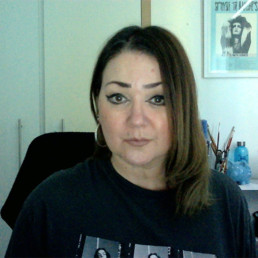
Written by Karen Self
Karen joined the NYA in late 2020 as a Youth Work Specialist. She is a JNC professionally qualified youth and community worker and qualified trainer. Karen has worked in the youth and community field for over 25 years, including managing and leading activity across a range of sectors and environments.
Karen Self, Learning and Development Manager, National Youth Agency, describes why she is so passionate about the new Gypsy, Roma and Traveller CPD course for youth workers and others working with young people looking to ensure their services are inclusive.
‘’The most important piece of advice for any youth service hoping to engage with young Gypsies, Roma and Travellers is to go out and meet and talk to the young people, their families and others in the community.’’ This statement, from our recently launched CPD course ‘Working with Gypsy, Roma, and Traveller Young People, might seem obvious if you’re a youth worker, but how well do you really understand Gypsy, Roma, and Traveller communities?
Perhaps you’re already working with Gypsy, Roma, and Traveller young people but not realise that you are because, contrary to the common misconception, some 78% of Gypsy, Roma, and Travellers in the UK live in permanent bricks and mortar housing (according to the 2011 Census)
Furthermore, do you fully appreciate the challenges the Gypsy, Roma, and Traveller communities face?
This question takes me back to my work directly with young Roma people, as well as managing teams that have worked with the local Roma community. I recall that it was essential that the team gave their absolute commitment to building trusted relationships within the community over a period of months, even years. Yes, we faced many challenges, the young people we connected with were often discriminated against by peers and members of the community, a mutual lack of cultural understanding often led to conflict with other young people, there were also worries about our intentions and our own concerns about the risk of exploitation of Roma young people by others; however, over time the work flourished, and we witnessed many successful outcomes for young people. We found that by focussing on their similarities with other young people – like football, music and dance – we were able to improve relationships and understanding amongst young people and by working with partners in the community and in the local secondary school we were able to tackle some of the more complex issues.
Our work with a group of Roma young people was successful because the lead detached youth worker was knowledgeable about the communities they worked alongside; they always strove to understand their needs and experiences and were committed to developing trusted, yet boundaried, relationships and instilled these values in their team of detached youth workers.
Would a course have improved the team’s and other professional’s knowledge and understanding? Most definitely! That’s why I’m so passionate about the two Gypsy, Roma, and Traveller CPD units the National Youth Agency has produced alongside ODET (Open Doors Education & Training).
The second course provides insights into successful activities to engage young people from the Gypsy Roma and Traveller communities, including.
- The importance of youth work with the community and effective approaches to engagement, social inclusion outreach, diversity, integration, and multi-agency work all with a focus on promoting pride and the visibility of cultures.
- How to identify and analyse participation barrier challenges.
- Examine good practice examples in youth work settings and how to develop inclusive practice in their own settings.
Including case studies, useful templates, and a wealth of resources, the ‘Working with Gypsy, Roma and Traveller Young People’ CPD is a must for any Youth Worker or any other professional working with young people who wishes to provide meaningful, trusted, and inclusive services.
You can access the CPD Parts 1 and 2 on the National Youth Agency website at www.nya.org.uk/academy-cpd/
Normalising Difference
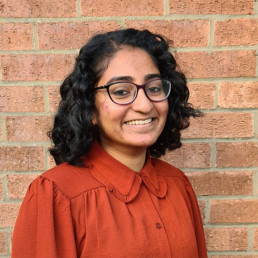
Written by Amrutha Anthony
Amrutha Anthony is a trainee teacher at Basingstoke SCITT (BASCITT).
Difference is daunting.
There are many differences and mine is that I am not British. I am an Indian who grew up in the UAE. This was not a problem by itself. However, I had decided to train to teach Secondary English.
I would be a foreigner teaching English to the English.
The humour was not lost on me, nor were the apprehensions.
However, I was lucky enough my main placement school is also where I’d gotten to work at as an LSA for a few months before my training began. From the very first day my school made me feel like I had always been part of the school community. From my days since I have realised why.
My school hosts a diverse community of both staff and students. Last year, 56% of the students were from ethnic groups, and English was second language to 31% of the student populace. My school’s diversity has been channelled into an attitude of inclusivity that permeates every interaction that happens here. In response to the Basingstoke & Deane Inclusions and Diversity Partnership launched in 2021, the school set up a Diversity Lead. Under her guidance, around 60 students signed up to be EARAs – Equality and Rights Advocates. They were trained to challenge and be upstanders in a gentle way. They were also responsible for training other students formally (assemblies) and informally (personal conversations). The EARAs proposed and piloted workshops for KS3 students on LGBTQ+, neurodiversity, and race. Historically, students also led a sign language workshop that proved quite popular.
School students support all forms of diversity because their own uniqueness is celebrated here. I remember being in a history class last year when they were learning about Black history in the UK. Whilst Black history in the US has become popular knowledge, the UK perspective was entirely new to me; together with the students, I soaked up this new angle in fascination. I found out later that this lesson was a result of the school wanting KS3 curriculum to reflect the histories of all its students. This commitment to year-round inclusivity made the schools Black History Month celebration so much more sincere.
My school is also twinned with a school in Cameroon, by the Portsmouth Diocese to which the school belongs. When it was safer, staff and students had gone over to volunteer; now the school supports the college through fundraising activities. On Diversity Day last year, staff and students were encouraged to come dressed in traditional attire and to take part in an evening celebration of all the ethnicities in the school. This mufti day was made meaningful when all staff and students donated a pound each to be sent off to Bamenda.
Being a single faith school, my school often faces a question from the outside about how inclusive it is of other faiths. Those on the inside, however, have the answers. Before the pandemic, my school hosted a student-led interfaith question time. The students were supported in preparing their answers by the RE department, yet they took the lead in bringing the answers to the student populace. The school also hosts an annual multi-faith trip where Year 8 students visit a gurdwara, a mosque, and a mandir. They come back with their textbook knowledge improved by a real-world awareness of how different faiths practice their beliefs. This awareness is strengthened by the practical steps the school takes to accommodate all faiths. A prime example would be the student-led Ramadan assemblies that remind students to be supportive of their fasting peers. Staff are also asked to make allowances for fasting students and the school shifts other celebrations to ensure they do not miss out. A group of Muslim students make regular use of an RE space to pray during lunchtimes and plans for a Muslim prayer space next to the chapel are soon to be realised.
It has been heart-warming to hear parents talk about how this level of support makes their children feel safe at school. In addition to racial and religious diversity, the school also supports children with additional needs. Last year this was 8% of all students. As an LSA, I had been in classes with many of these students and it was delightful to see how the other children wholeheartedly accepted the SEND children. When the SEND children behave differently or are given additional support, none of the other children bat an eyelid. I have heard a SEND child screaming outside and I have seen my class calmly continue with their work; no one wanted to look out the window or even seem surprised. This to me showed true inclusivity – not just about understanding differences and accepting them, but having differences normalised.
Here at school, it is perfectly normal for me to be different.
Here at school, it is perfectly normal for me to be teaching English.
Here at school, I can grow and learn and the only thing that affects my ability to succeed is the amount of work I put in.
I write this as a student teacher, but I write this echoing the sentiments of hundreds of children who walk in each day. I write this having been cherished and supported by all members of staff. I have only been here for about half a year, but I have never felt so accepted anywhere else. The ethos of the school guides the community in respecting the innate dignity of all human beings. The school way is to ‘walk with each other’ and this is practiced by everyone from SLT to support staff to students.

